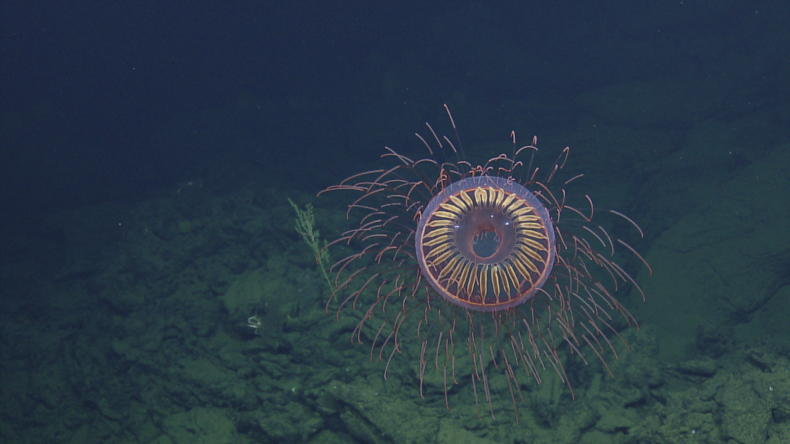Swarms of jellyfish wash up on UK beaches due to high temperatures
The UK saw its hottest day last month with maximum temperatures exceeding heatwave threshold.
By Sadhna Yadav
07/07/22
Thousands of jellyfish have been spotted on beaches all across the UK as warmer temperatures have allowed their population to increase.
Swarms of compass jellyfish and lion's mane jellyfish have been spotted in Wales and Ireland. The lion's mane jellyfish is widespread across Europe. They have a deep red complexion with thin white tendrils and are dangerous creatures. Any contact with them can cause a nasty sting.
Compass jellyfish have distinctive red and orange markings. They are usually 30cm. in diameter and resemble a compass. The experts have attributed the spotting to increased temperatures that allow jellyfish to bloom into large groups as more sunlight results in more plankton for the jellyfish to eat.
Overfishing is another factor which is allowing their population to increase. Less fish in the sea implies there is less competition for food.
Jellyfish populations are expected to further rise due to increasing sea temperatures from global warming, writes The Independent.
Families that have decided to holiday in the UK this summer have been warned to keep a close eye on the jellyfish invasion. The swimmers have been warned not to touch them. The NHS recommends washing the affected area with seawater or vinegar if someone does happen to come in contact with them.
While extremely high temperatures have allowed jellyfish to thrive, other species have not been so lucky. The UK has reported mass fish deaths over the last few months. The authorities even had to issue a red alert for the south-east and east of England.
Hundreds of roach fish were found dead at Belper River Gardens in Derbyshire after temperatures went past 30ºC in the area last month.
Oceans soaking up 90 percent of the excess heat from global warming has caused marine heatwaves that are killing marine species every year. According to a report in CNN, last year was the hottest year for the world's oceans.

Swarms of compass jellyfish and lion's mane jellyfish have been spotted in Wales and Ireland. The lion's mane jellyfish is widespread across Europe. They have a deep red complexion with thin white tendrils and are dangerous creatures. Any contact with them can cause a nasty sting.
Compass jellyfish have distinctive red and orange markings. They are usually 30cm. in diameter and resemble a compass. The experts have attributed the spotting to increased temperatures that allow jellyfish to bloom into large groups as more sunlight results in more plankton for the jellyfish to eat.
Overfishing is another factor which is allowing their population to increase. Less fish in the sea implies there is less competition for food.
Jellyfish populations are expected to further rise due to increasing sea temperatures from global warming, writes The Independent.
Families that have decided to holiday in the UK this summer have been warned to keep a close eye on the jellyfish invasion. The swimmers have been warned not to touch them. The NHS recommends washing the affected area with seawater or vinegar if someone does happen to come in contact with them.
While extremely high temperatures have allowed jellyfish to thrive, other species have not been so lucky. The UK has reported mass fish deaths over the last few months. The authorities even had to issue a red alert for the south-east and east of England.
Hundreds of roach fish were found dead at Belper River Gardens in Derbyshire after temperatures went past 30ºC in the area last month.
Oceans soaking up 90 percent of the excess heat from global warming has caused marine heatwaves that are killing marine species every year. According to a report in CNN, last year was the hottest year for the world's oceans.

A breathtaking view of the illuminated jellyfish that resembles a firework OET/NAUTILUSLIVE
No comments:
Post a Comment